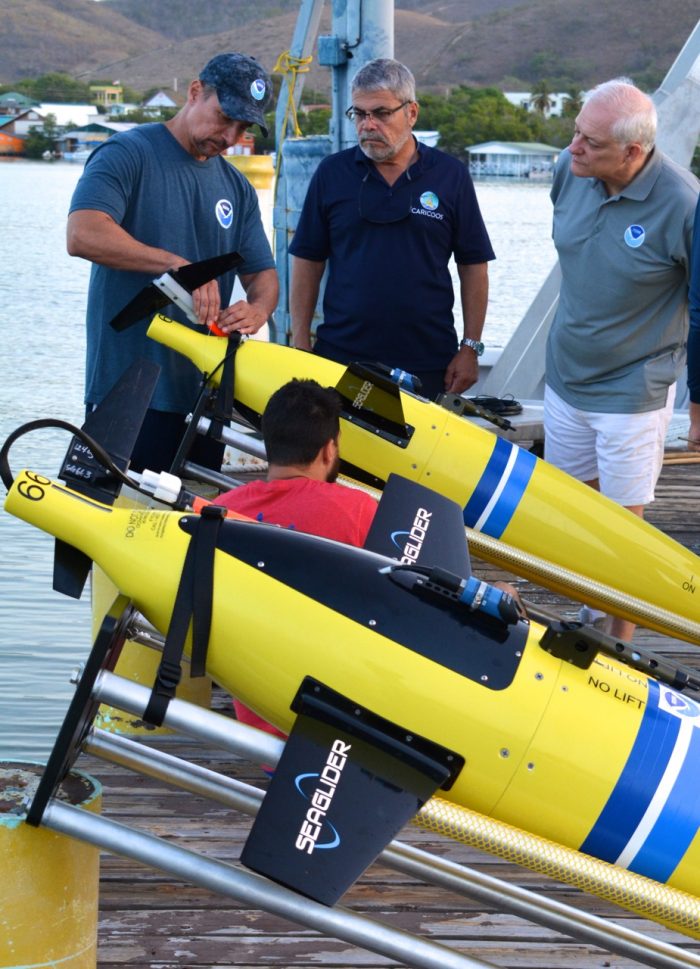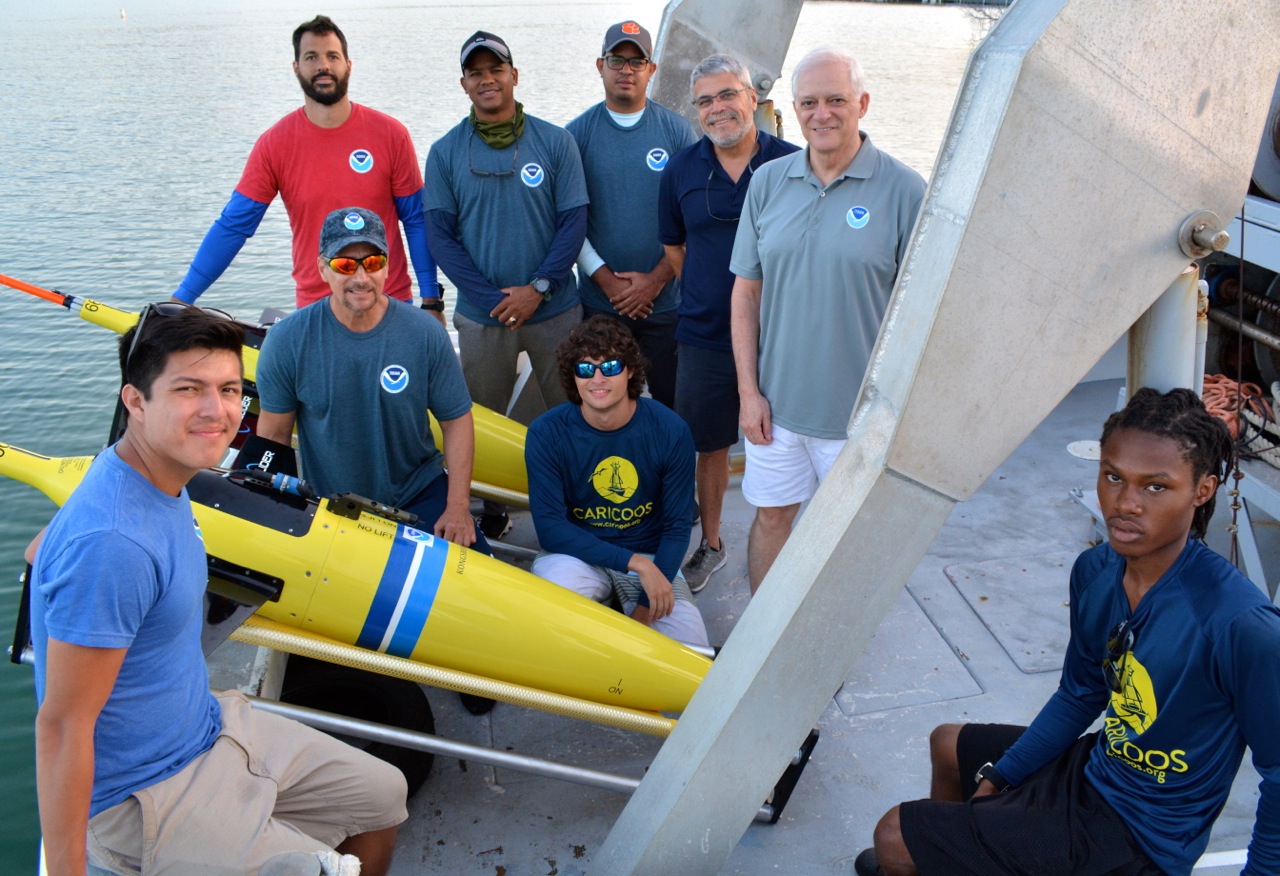CARICOOS continues collaborating with NOAA’s Atlantic Oceanographic and Meteorological Laboratory’s (AOML) Physical Oceanography Division (PhOD) by assisting in the deployments, recoveries, and refurbishment of underwater gliders. This year, the hurricane glider operations will be enhanced by establishing a network of underwater gliders in the Caribbean Sea, tropical Atlantic Ocean, and east US continental shelf. A total of seven (7) underwater gliders, five (5) in the US Caribbean waters (Puerto Rico and US Virgin Island), one (1) near east of Bahamas and one (1) in the Dominican Republic EEZ will be deployed. These areas were selected because is where typically hurricanes are known to travel and intensify. Therefore, monitoring upper ocean conditions in these areas will contribute to the improvement of hurricane intensity forecast.
Technical training on how to prepare, configure and deploy the underwater gliders were provided by NOAA-AOML and CARICOOS personnel to members of the Dominican Republic National Authority for Maritime Affairs (ANAMAR), Ocean and Coastal Observing Virgin Islands (OCOVI) and Cape Eleuthera Institute. The training was held on July 15-18 in the facilities of the Marine Science Department of the University of Puerto Rico – Mayaguez located in Magueyes Island, La Parguera, Lajas. During the training, participants were able to practice during the deployment of four (4) underwater gliders in Puerto Rico.
The rest underwater gliders are expected to be deployed in the next weeks. Once the gliders are in the water, near-real-time measurements of water temperature, salinity, dissolved oxygen, and chlorophyll at a variety of water depths for the entire hurricane season will be collected so that our partners at AOML can actively assess and seek to improve their hurricane forecasting capabilities. Furthermore, the open ocean data will be used to assess the skill of numerical ocean models in the CARICOOS region.
We are very proud to be part of this project and to contribute to improving hurricane forecasts. The data will also be available to the public through the U.S. IOOS Glider Data Assembly Center (https://gliders.ioos.us/) later this summer and at CARICOOS website (https://www.caricoos.org/).




